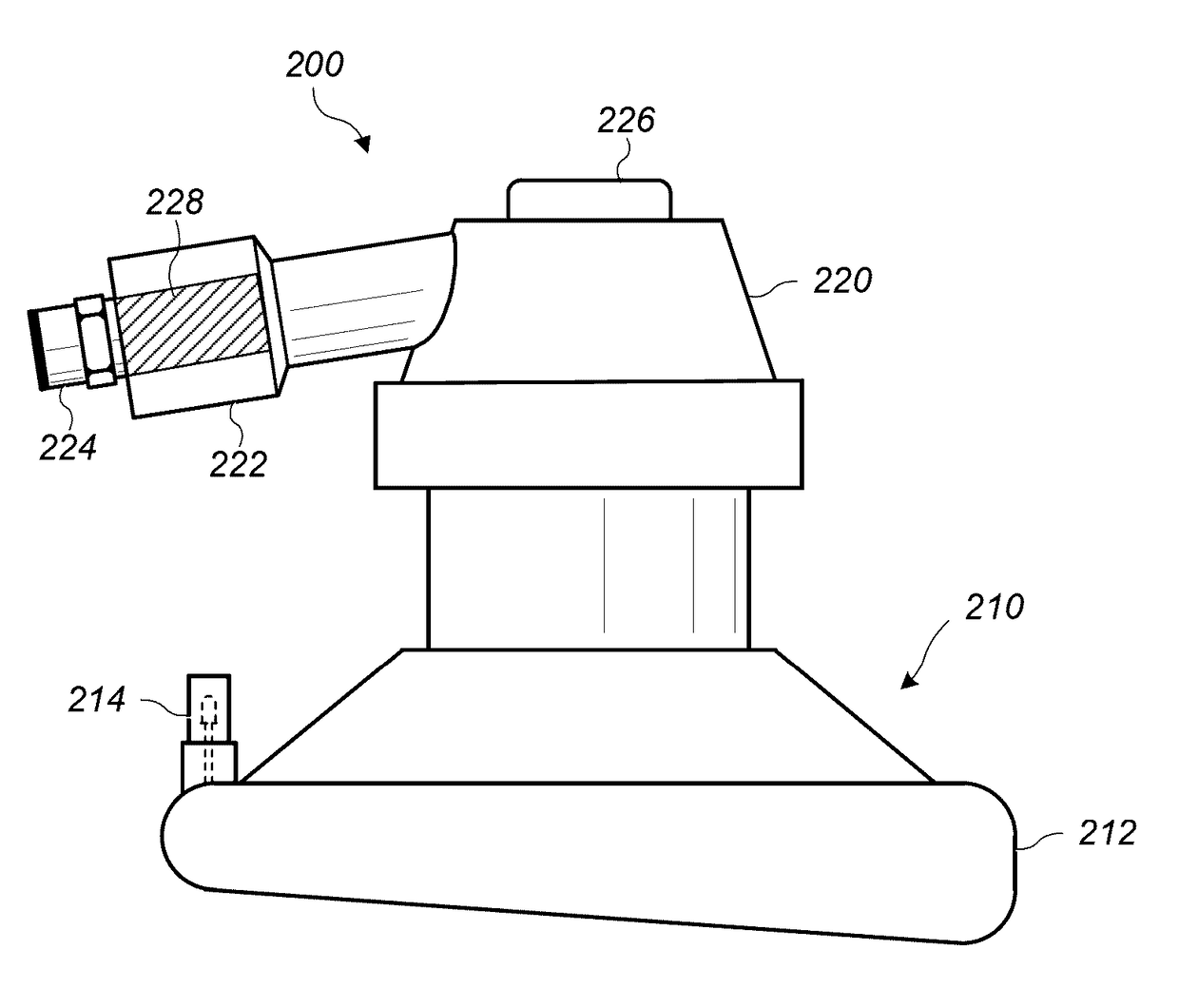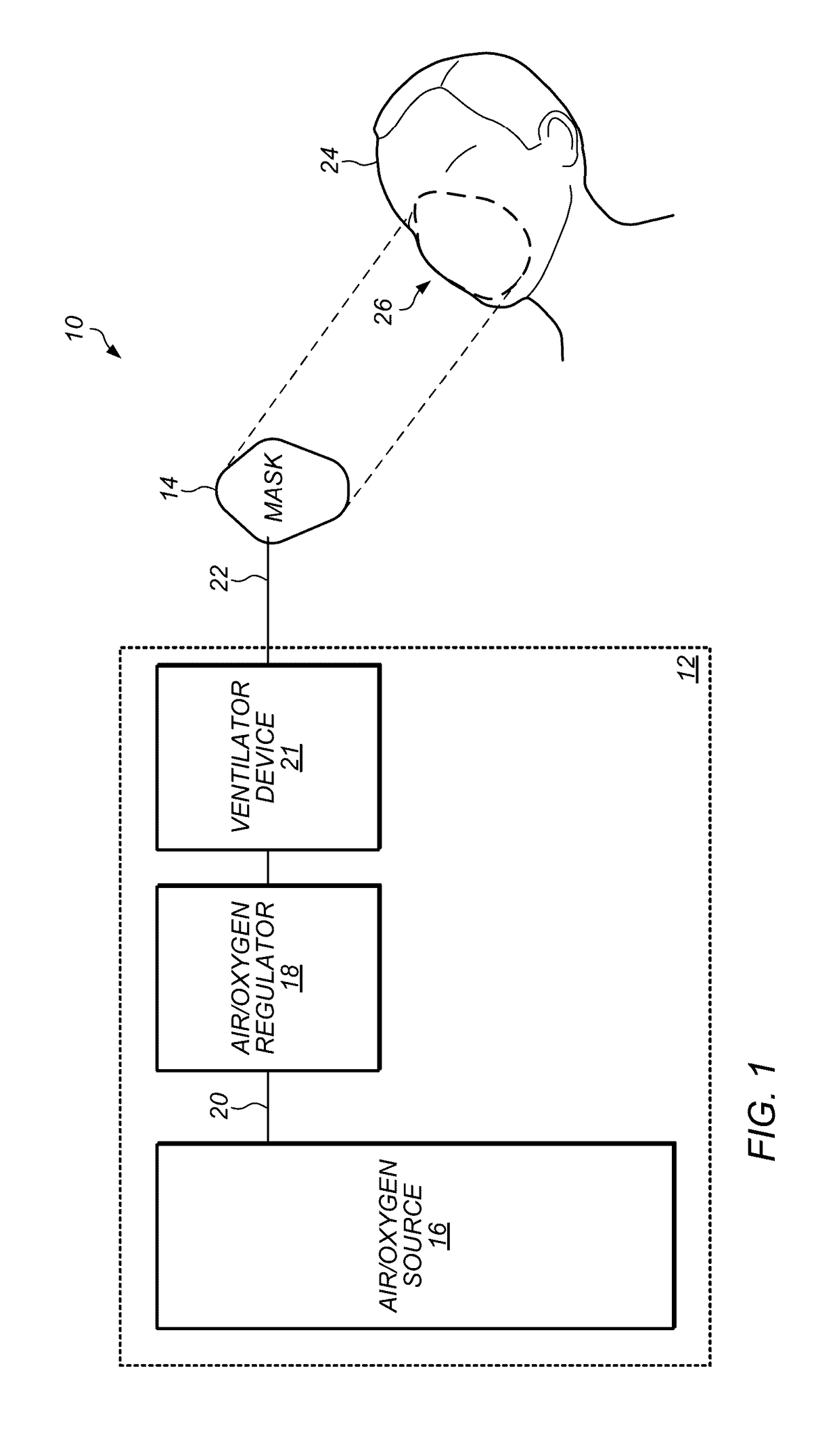Artificial respiration system with timing control and automatic mask detection
a technology of automatic mask detection and artificial respiration, applied in the field of systems and methods, can solve the problems of inability to perform cpr properly, lack of ongoing practice, and insufficient familiarity or training of a large percentage of the population, and achieve the effect of reducing the amount of non-compression and non-respiration tim
- Summary
- Abstract
- Description
- Claims
- Application Information
AI Technical Summary
Benefits of technology
Problems solved by technology
Method used
Image
Examples
Embodiment Construction
[0037]As discussed in more detail below, certain embodiments of the present technique include a system and method for automatically providing air and / or oxygen in accordance with a set of preset artificial respiration or ventilation parameters based on the size of the mask used to deliver the air / oxygen. In one embodiment, the method includes providing air / oxygen at a pre-selected pressure (e.g., a maximum pressure limit), breath volume and respiratory-rate as a function of the size of the mask coupled to an air / oxygen supply system. In some embodiments, an air / oxygen system includes a ventilator system having a ventilator mask and a ventilator supply. In one embodiment, the mask that is ultimately coupled to the ventilator supply is chosen from a plurality of mask sizes. The mask sizes include, in some embodiments, an infant sized mask, a child sized mask and an adult sized mask. In certain embodiments, the ventilator system is configured to deliver the air / oxygen in accordance wit...
PUM
 Login to View More
Login to View More Abstract
Description
Claims
Application Information
 Login to View More
Login to View More - R&D
- Intellectual Property
- Life Sciences
- Materials
- Tech Scout
- Unparalleled Data Quality
- Higher Quality Content
- 60% Fewer Hallucinations
Browse by: Latest US Patents, China's latest patents, Technical Efficacy Thesaurus, Application Domain, Technology Topic, Popular Technical Reports.
© 2025 PatSnap. All rights reserved.Legal|Privacy policy|Modern Slavery Act Transparency Statement|Sitemap|About US| Contact US: help@patsnap.com



